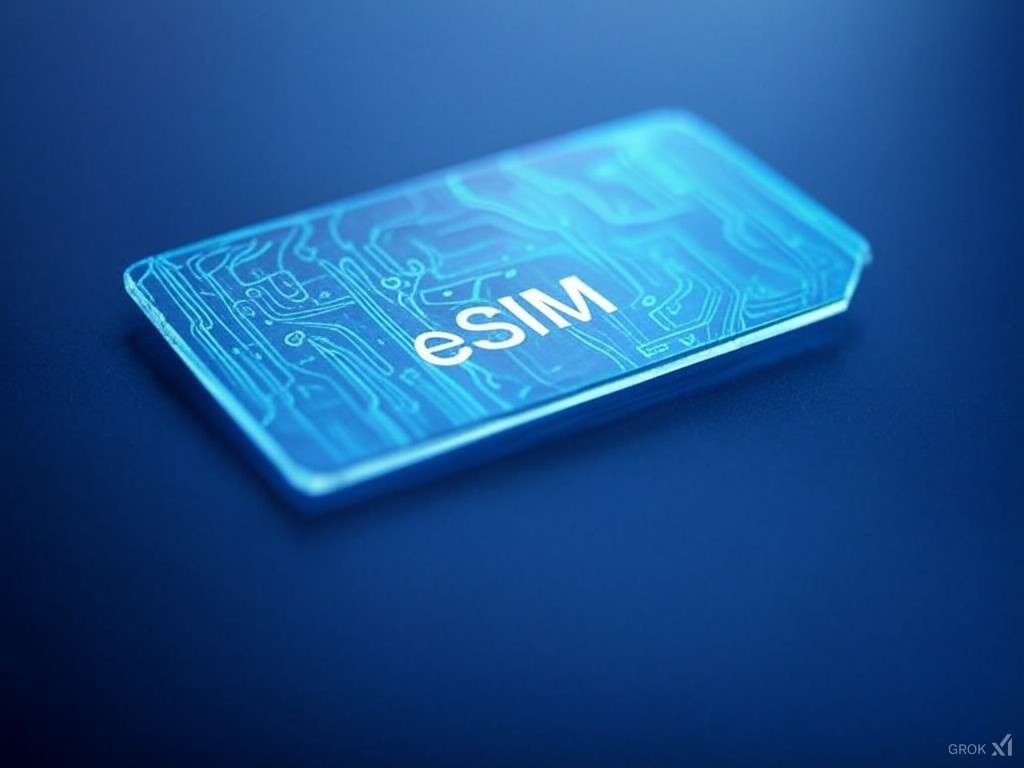The gradual disappearance of physical SIM cards is marking a turning point in the history of mobile telephony. After more than three decades serving as the passport for our devices to access the network, the traditional plastic SIM — whether in standard, micro, or nano formats — is giving way to its embedded version: the eSIM, a digital evolution that promises to simplify connectivity but also signals the decline of an entire industrial chain.
This shift, already standard in countries like the United States and rapidly expanding across Europe and Asia, accelerates in 2025 with decisions from manufacturers such as Apple, Google, Samsung, and Huawei, who are launching new devices without SIM trays. The “sleeveless” era has begun, and its implications go far beyond aesthetic design.
Fewer parts, more control
The eSIM (embedded SIM) is a chip directly soldered onto the device’s motherboard. From a technical perspective, this represents a clear advance:
- Elimination of trays and mobile components, reducing the risk of mechanical failures.
- Physical space savings inside the device, which can be used to include a larger battery or additional sensors.
- Improved water and dust resistance.
- Enhanced security, as the eSIM cannot be removed by third parties in case of theft.
Additionally, from the user’s perspective, eSIM allows for changing carriers without needing to purchase a new card or visit a store. Setup can be done via a QR code or directly through an app.
Advantages that appeal to manufacturers and users
This technological leap aligns perfectly with current mobile sector priorities: minimalism, efficiency, and sustainability. Eliminating the physical SIM means less plastic, fewer metal trays, less packaging, and simpler logistics. Industry estimates suggest that thousands of tons of plastic could be saved annually if all devices migrated to eSIM.
Furthermore, telecommunications companies gain greater control and flexibility. With eSIM, operators can offer multi-SIM plans for different devices (smartphone, smartwatch, tablet) or even temporary and roaming plans that activate within seconds.
But not all progress: an industry at risk of disappearing
However, this change is not neutral. The rise of eSIM threatens to wipe out an entire industry built around the manufacturing, distribution, and customization of physical SIM cards:
- SIM card manufacturers like Giesecke+Devrient, IDEMIA, or Thales will need to shift their business models toward eSIM or face rapid market loss.
- Logistics companies distributing millions of SIMs each month will see their workload decrease.
- Mobile operators still dependent on physical processes to activate lines will need to accelerate their digital transformation.
- Even retail stores may see fewer visits from users who no longer require in-person assistance to activate their phones.
And even more profoundly: countries where digital infrastructure is not fully developed (many markets in Africa, Latin America, or Asia) could fall behind if the transition to eSIM proceeds without accessible alternatives.
Disadvantages of the eSIM: the other side of the coin
Despite its benefits, adopting eSIM also presents challenges and vulnerabilities:
- Lack of interoperability: not all operators worldwide support eSIM, and some still restrict its use.
- Manual portability difficulties: switching an eSIM between devices can be more cumbersome than swapping a physical SIM.
- Greater software dependency: if a phone experiences system failure or is locked, regaining network access can become complicated without technical assistance.
- User privacy and control: critics note that operators and manufacturers might gain increased control over device connectivity, raising new debates about consumer autonomy.
Apple, Samsung, and Huawei lead the change
Apple pioneered the removal of the SIM tray in its U.S. models of the iPhone 14. Now, in 2025, it’s expected that all iPhone 17s sold in Europe will feature only eSIM. Samsung has integrated this technology into its new Galaxy Z Flip and Fold, and Huawei recently announced that its triple-folding Mate XTs will be the first eSIM smartphone available in China.
Google, Xiaomi, OPPO, and Honor are also following this path. The elimination of physical SIM cards now appears to be an irreversible strategic decision.
And what about users?
For many consumers, the transition will be almost invisible: instead of inserting a SIM, they will scan a code or install a digital profile. But for others — especially in rural areas, developing countries, or among less tech-savvy populations — the process might be confusing or even exclusionary.
Moreover, frequent travelers or users with multiple lines could face technical limitations if their devices or carriers do not support multiple active eSIMs or easy profile management.
Conclusion: an inevitable transformation, but not without costs
The shift toward a world of mobile devices without physical SIMs is already underway. It sounds modern, clean, and efficient. But it also marks the end of decades of infrastructure, logistics, and employment tied to the classic card that once symbolized each user’s digital identity.
The industry must adapt quickly to this new reality. And consumers, while gaining convenience, will need to trust increasingly in digital systems for activation, support, and connectivity.
What’s clear is that, just as with the removal of headphone jacks, CD players, or removable batteries, the space left by the SIM card will never be filled again.
Frequently Asked Questions (FAQ)
What is an eSIM and how is it activated?
An eSIM is a digital SIM card integrated into the device. It is activated by scanning a QR code provided by the carrier or through its official app.
What are the advantages of a phone without a physical SIM?
Increased water resistance, internal space savings, the ability to use multiple carrier profiles, and quick changes without physical intervention.
Can I have multiple lines with eSIM?
It depends on the device model. Some allow multiple eSIM profiles to be active or stored for easy switching.
What happens if I change my phone?
You will need to transfer the eSIM profile to the new device. Some carriers facilitate this via their app, but it may require contacting customer service.

